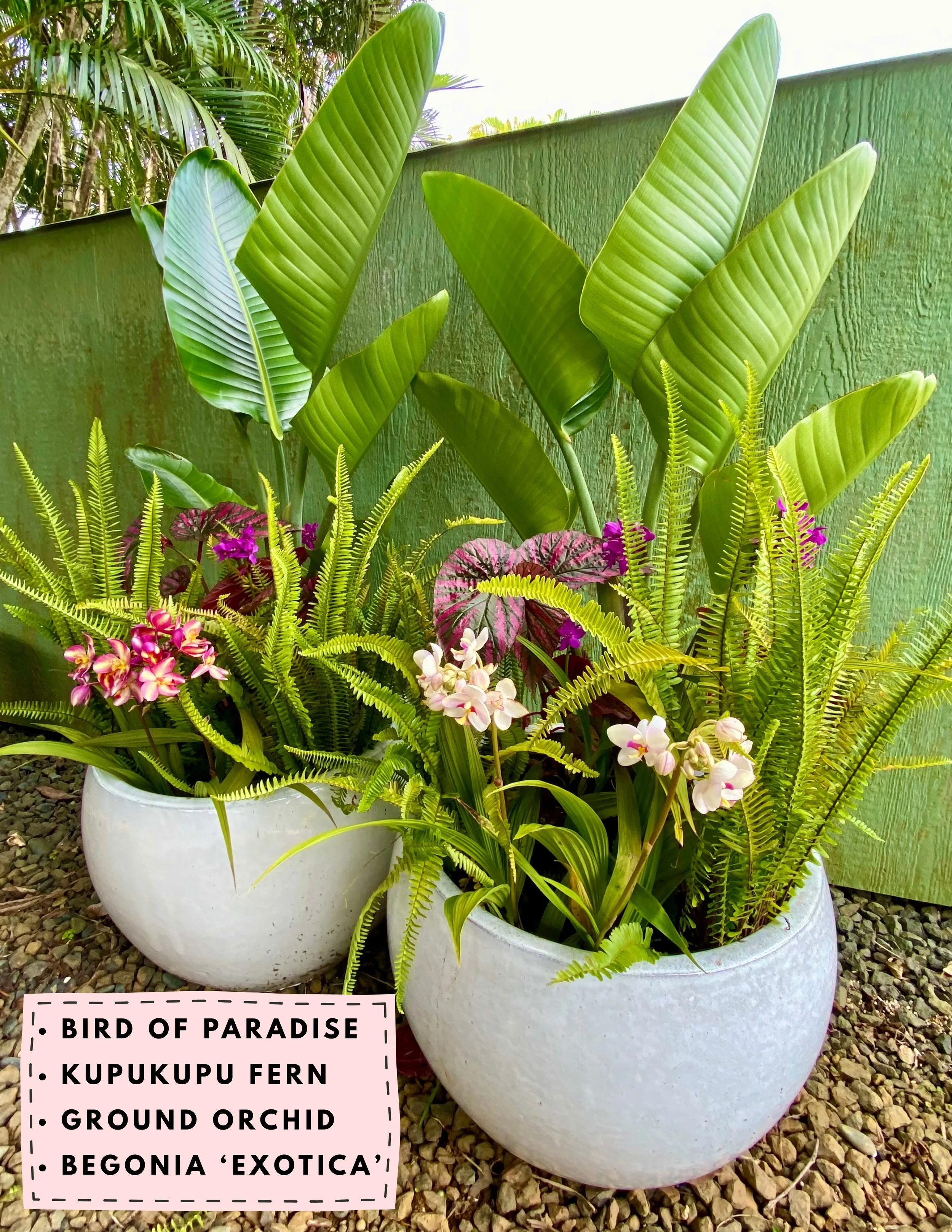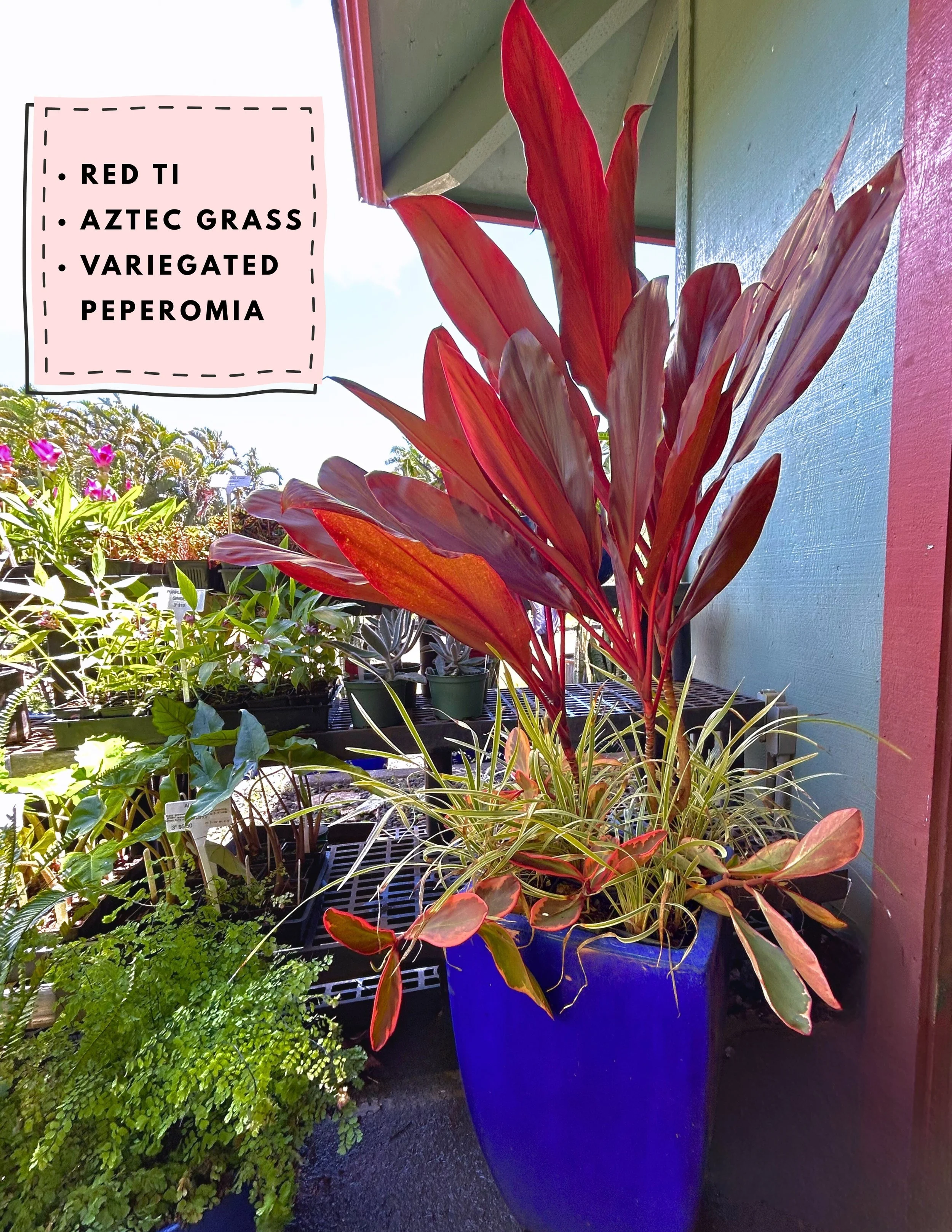Container Garden Theory
If you’ve been to the nursery lately, you may have noticed our beautiful pots and planters on display with an array of plants, colors, and textures! We’ve been testing out what we call the Container Garden Theory. Container gardening is nothing new, and neither is this theory. When it comes to designing the perfect planter for your front door, back patio, or indoors, there are three components you should include: A Thriller, a Filler, and a Spiller. Now, this might sound like a silly riddle, but just like a classic nursery rhyme, this theory stands the test of time! But before we get into the details, we need to talk containers. Let’s dive in.
Choosing Your Container
Before you can even start your container garden, you must first select your pot. In your enthusiasm, you may find yourself wanting to jump right into designing a large planter, but it’s best to start small. Select a pot or pots that complement the area you are working with. Your lanai craving a pop of color and personality? Go for pots in a fun color or unique shape. Want the flowers and foliage to be the showstopper? Opt for a more neutral pot. The most important part of choosing your container is drainage. Your planter should always have a drainage hole in the bottom to allow excess water to escape. Without good drainage, the pot will retain too much water, causing your plants to suffer from overwatering or root rot. Your pot is the base of your container garden, so pick what speaks to you and get ready to tap into your creativity!
The Thriller
When first approaching your pot, think about what plant you want to be the focal point. This is usually something tall or bushy, with attractive foliage or colorful flowers. Find something that really thrills. Some thrillers we’ve been using in our displays are Bird of Paradise, Ti plants, Dracaena, Orchids, Cypress, and Palms. The only thing to keep in mind is the environment your planter will be in. If you’re planning on displaying your planter by your front door with direct sunlight, make sure your plants can tolerate full sun. If you’re designing your planter for a patio in the shade where it gets a lot of rain, select plants that don’t need full sun and can tolerate wet conditions. You want to make sure the plants in your container require similar conditions so they can be cared for the same way. Don’t be afraid to try different things! Mess around with what catches your eye and find what thrills you!
The Filler
Although the name implies that these are just “fillers,” these plants are just as important as your main centerpiece. They should help to complement your thriller and balance the overall look. If you selected a tall thriller like a Ti plant, you might want to select a filler that also adds height to balance out the planter. Think of using Ground Orchids or Begonias, which add foliage as well as height with their tall flowers! Or something grassy and full like Aztec Grass, Dianella, or the Blackberry Jam Lily! Don’t be afraid to let your filler also thrill! If your thriller is more bushy than tall, select a filler that helps to round out the shape of the planter. Try Sunpatiens or Mexican Heather for colorful flowers, Kupukupu or Palapalai ferns for texture, or Caladiums or Calathea to add some lush greenery! Don’t be afraid to mix in different plants and textures. Play around with your design and get creative!
The Spiller
The last element of our Container Garden Theory is the spiller. This is the feature that adds some dimension and movement to your planter and really brings it to life! The spiller implies that you should use some sort of trailing plant, but this can be any plant that adds dimension and flow to your design. Pothos or Peperomia are great trailing plants to use in a container! Need a pop of color? Try the Pink Paradise Tradescantia, Roundleaf Hemigraphis, or Blue Daze. These elements are guidelines but not strict rules. It really is up to you to mix and match to your heart’s desire! And to get inspired, all you have to do is walk around the nursery.


